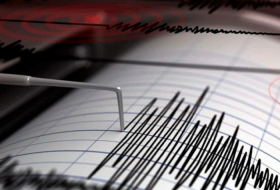The bits of debris, one from the tailplane, one from the wing flap, were found 130 miles apart on beaches in Mozambique.
The search team in Australia has now released photos that give an eerie clue to the fate of the flight.
Two pieces of text are stencilled onto the parts, one says "NO STEP", the other says "676EB". Investigators say they are clearly in the same font and design used by Malaysian Airlines.
If you look at the pictures below, you can see that the letters and numbers differ from the way they would have looked when they left Boeing`s factory. The fonts are different. Plus, one was repainted a different colour and the other was in a different place.
The pieces reveal other clues too.
Both are from the right type of plane, a Boeing 777. Bear in mind that no other 777 has ever crashed in the southern hemisphere, and none has reported bits falling off.
Check
The piece of tailplane also had a fastener on it, carrying a manufacturer`s stamp (see picture). That manufacturer does not make parts for the latest 777s, but it was making them when MH370 was built. They double checked by looking at the aircraft that rolled off the production line straight afterwards, number 405. The Malaysian flight was number 404.
There is still work going on to examine all the bits of marine life found on the debris, which could give away how long they have been in the water.
But for now investigators have concluded that both these pieces are, "almost certainly from Malaysian Airlines Boeing 777 aircraft, registered 9M-MRO".
Australian experts are also checking two other pieces of flotsam found on beaches. One has a Rolls-Royce logo on and turned up in South Africa. The other was found on Rodrigues Island.
And this all comes on top of confirmation that another wing part, called a flaperon, that washed up on a beach on Reunion Island, was also from the missing plane.
All of this suggests the aircraft did crash into the sea. None of it tells us why.
Belief
Thousands of miles from where these pieces have washed up, three ships are still combing the belly of the ocean looking for the main body of the aircraft. Most of it will not have floated away.
It is tough, dangerous work in a hostile environment, searching a sea bed that makes the Alps look like a billiard table.
The sea search is due to end this summer. After that, barring new evidence, they will stop looking.
That is miserable news for families of the 239 people on board, some of whom have told me that their lives have been in limbo ever since MH370 disappeared.
Many still don`t believe the aircraft crashed into the sea, they do not trust anything the authorities tell them.
More about:
















































